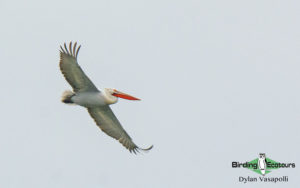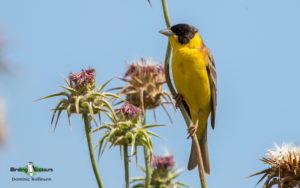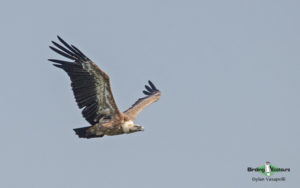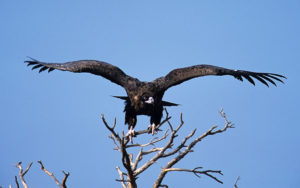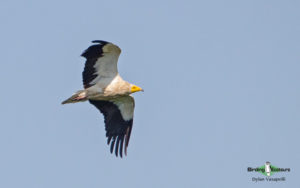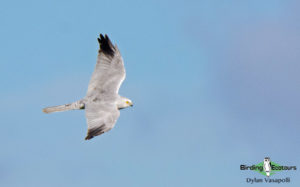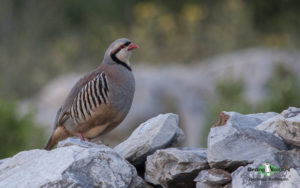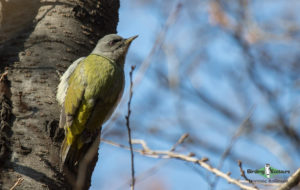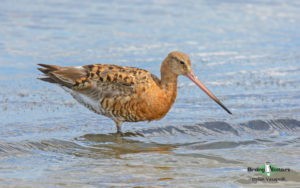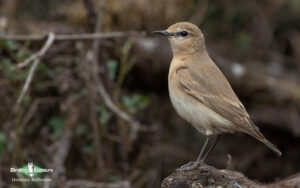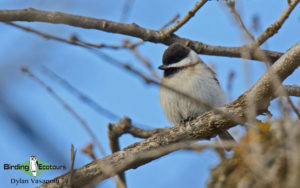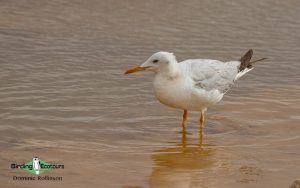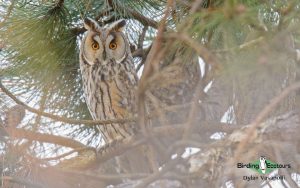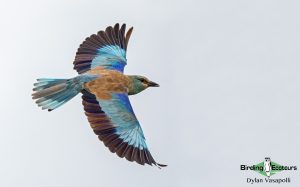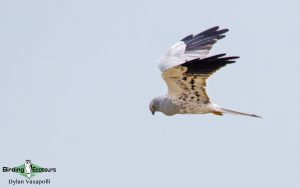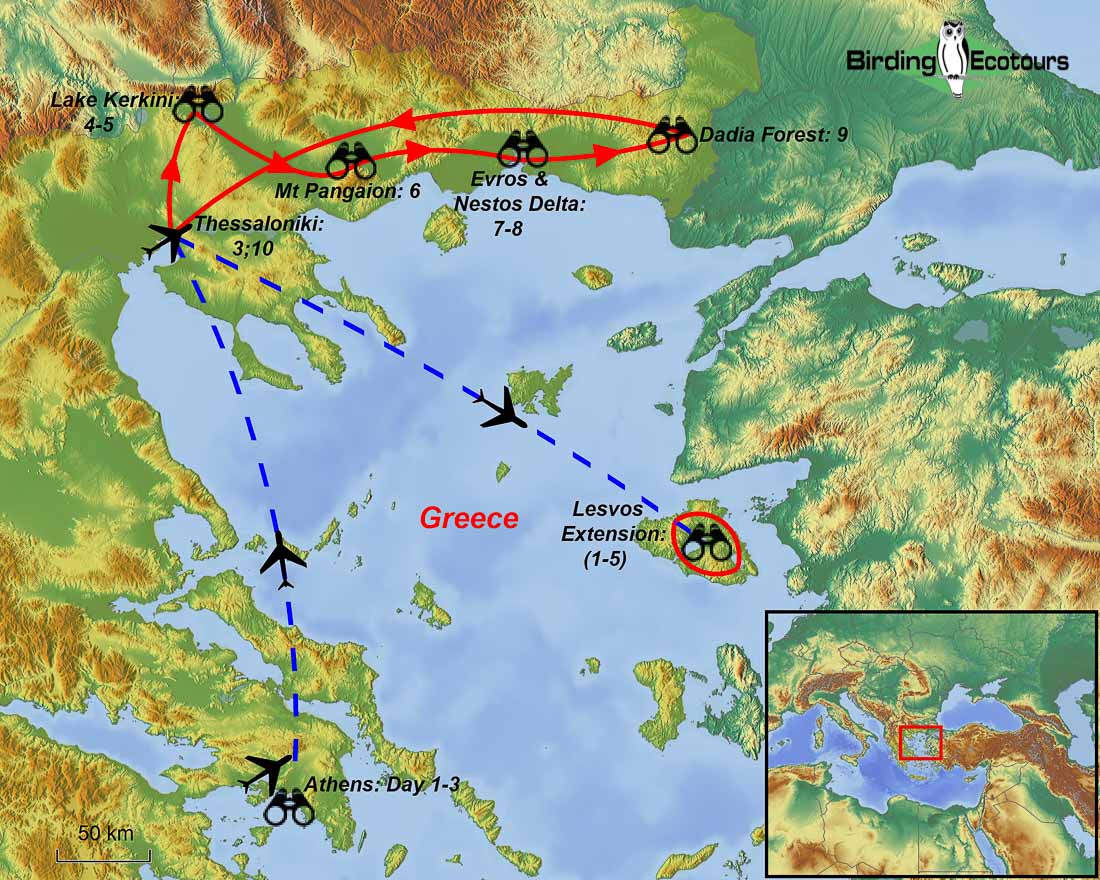Greece: Spring Birding Adventure
Greece Birding Tour: Spring Birding Adventure
April 2026/2027
Greece has one of the highest bird densities in Europe and our tour will take in the best avifauna this beautiful country has to offer, as well as the fascinating culture and history of one of the oldest civilizations on Earth. This ten-day, small group birdwatching tour will start in Athens, one of the cultural capitals of the world, which also happens to be superb for birding. Here we will familiarize ourselves with the more common European birds, as well as visit some of the best cultural spots in the city, such as the world-famous Acropolis.
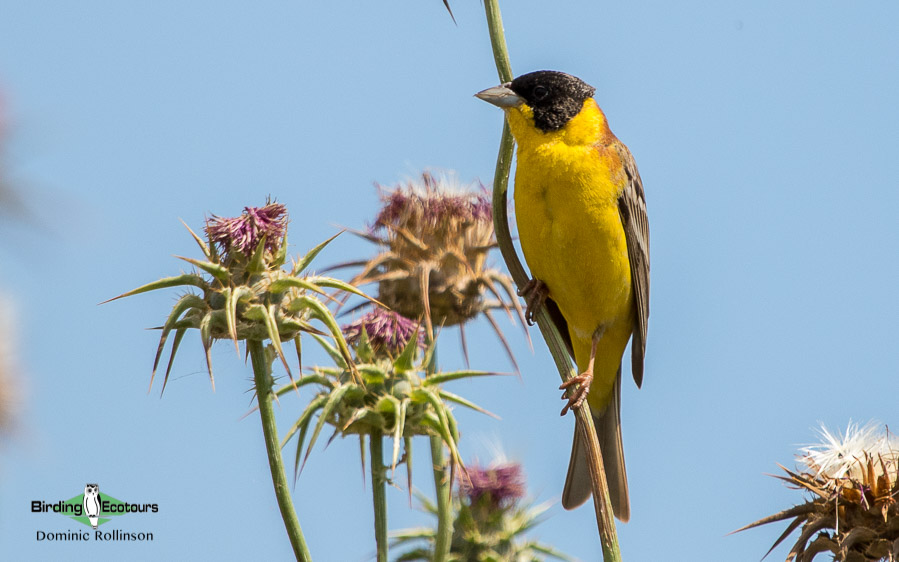
We then head up to the stunning Mount Ymittos near Athens, in search of exciting species such as Western Rock Nuthatch, Rüppell’s Warbler, Eastern Orphean Warbler , Barred Warbler, Eastern Black-eared Wheatear, Black-headed Bunting, and Cretzschmar’s Bunting. This area is also a migration hotspot and supports a wide range of flora and fauna which has led to Mount Ymittos becoming a Natura 2000 protected area (the highest level of protection in Europe).
From Athens we fly north to Thessaloniki and head straight to beautiful Lake Kerkini, an Important Bird Area (IBA) identified by BirdLife International as extremely valuable for birds (and one of several IBAs we visit on this tour). The lake offers wonderful opportunities to view breeding colonies of the Near Threatened (BirdLife International) Dalmatian Pelican and the curious-looking Pygmy Cormorant. The surrounding forest is home to six woodpecker species, including Syrian Woodpecker, Grey-headed Woodpecker, and Middle Spotted Woodpecker. We will also explore the nearby mountains on the Bulgarian border in search of Sardinian Warbler, Eastern Subalpine Warbler, Eastern Olivaceous Warbler, and Eastern Bonelli’s Warbler.
Our next stop is Mount Pangaion where we explore the foothills, before heading up to the alpine habitats in the higher altitudes (weather/snow levels permitting). Here we will target higher elevation species that include Common Rock Thrush, Water Pipit, Ortolan Bunting, Yellowhammer, Rock Bunting, Alpine Chough, and Rock Partridge. While in the area we will take in the picturesque city of Kavala on the slopes of Mount Symvolo.
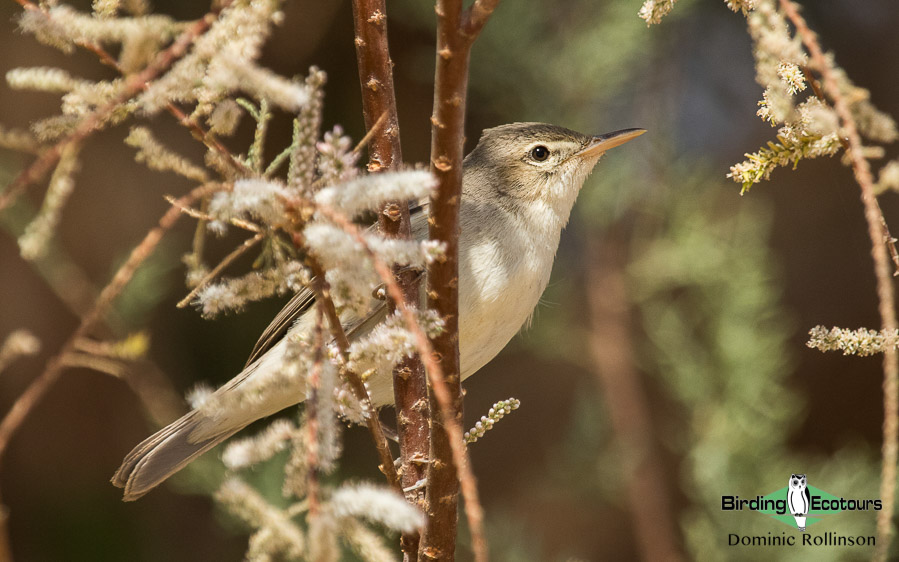
Next we will visit the Nestos Delta on our way to the Evros Delta. We will take time to explore the Nestos Delta’s riverine forest and lagoons which hold many exciting species including White-tailed Eagle, European Turtle Dove, Spur-winged Lapwing, Collared Pratincole, Montagu’s Harrier, Eurasian Hoopoe, Calandra Lark, and Marsh Sandpiper. We may also get lucky in spotting the striking Golden Jackal, a species of canid whose range spreads from Eastern Europe all the way to Southeast Asia.
While at the Evros Delta we will meet local guides who will give us an in-depth look at the management of the area and a tour where we will look for its key species including Purple Heron, European Roller, Squacco Heron, Eurasian Bittern, Slender-billed Gull, Mediterranean Gull, Black-winged Stilt, Glossy Ibis, Greater Flamingo, Long-legged Buzzard, Sandwich Tern, Black Tern, White-winged Tern, Whiskered Tern, and Isabelline Wheatear. We may also glimpse some of the delta’s elusive mammal species including (European) Wild Cat, (European) Grey Wolf, and (Central European) Wild Boar.
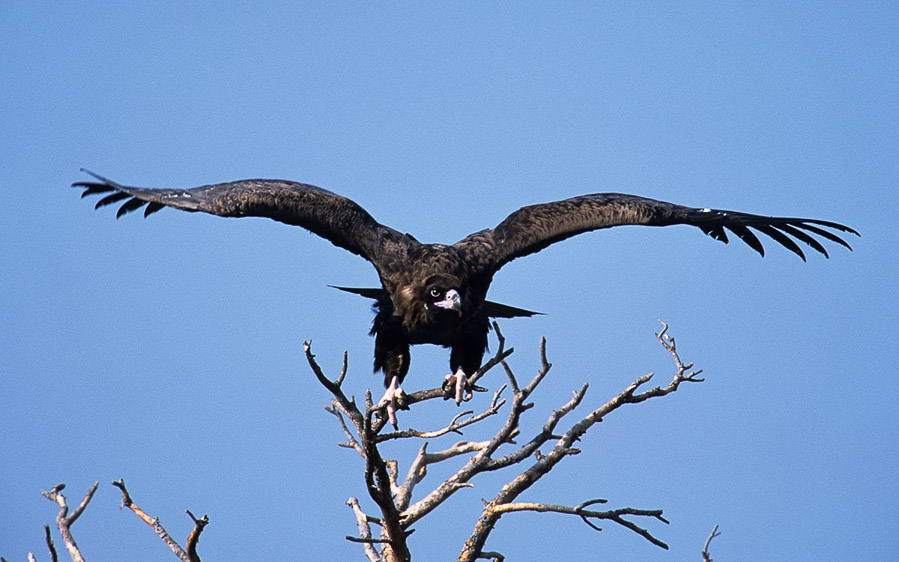
Nearing the end of our tour we will visit Dadia Forest, which is regarded as the best location in Europe for raptors, with a staggering 35 out of the possible 38 diurnal European raptor species recorded here, along with seven out of nine European owl species. We will also have the unique experience of visiting a vulture feeding station where we can watch the spectacle of these amazing birds in their feeding frenzies. This activity should give us great views of Griffon Vulture, and possibly pretty (for a vulture) Egyptian Vulture, and humongous Cinereous Vulture too.
We will finish up this tour by driving back to Thessaloniki, where the tour ends and you can catch a flight back home. However, if you want to explore more of Greece (and we highly recommend it), then you can join our five-day Birding Tour Greece: Lesvos in Spring Extension, which runs immediately after this tour. This extension offers several different resident species as well as further interesting migrants, with tour highlights including Krüper’s Nuthatch, Western Rock Nuthatch, Cinereous Bunting, Eleonora’s Falcon, Rufous-tailed Scrub Robin, and much more, including the opportunity of observing the visible migration spectacle on a large scale.
Itinerary (10 days/9 nights)
Day 1. Arrival in Athens
Welcome to our Greece spring birding tour. You will be met at Athens International Airport by your Birding Ecotours tour leader and local Greek bird guide. From here you will be transferred to your hotel for the first two nights of the tour, with the rest of the day at leisure (you might wish to get your city sightseeing underway). Once the whole group has arrived, we will meet for our first authentic Greek dinner as we discuss the itinerary and help you with anything you may need. You can then use the evening to relax before we head off on our thrilling birding adventure.
Overnight: Acropolis Museum Boutique Hotel, Athens
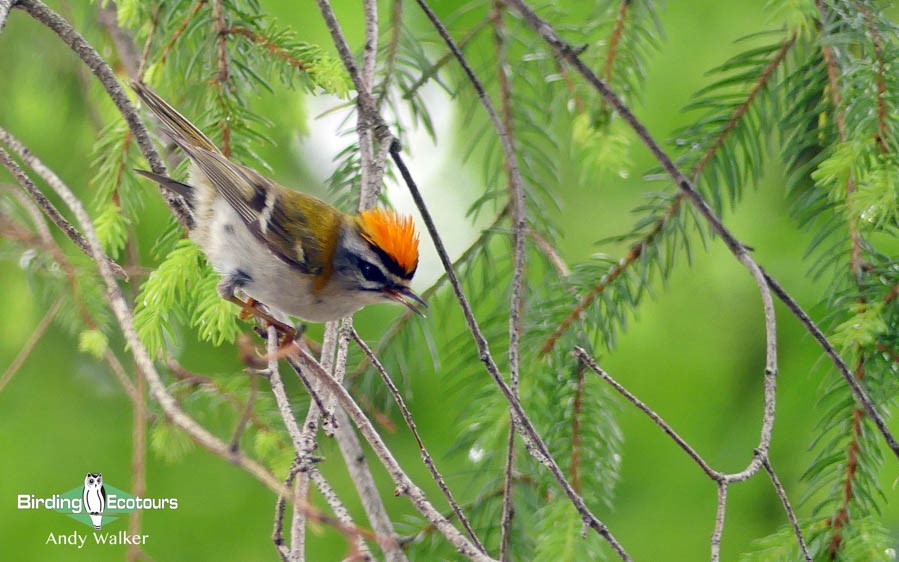
Day 2. Cultural highlights and European birding introduction in Athens
After breakfast at your hotel you will be picked up and we will depart for a full-day tour to see the highlights of Athens, including the Acropolis with all of its famous monuments, the Ancient Agora, the Roman Agora, the Acropolis Museum, the Temple of Olympian Zeus, and possibly a visit to Marathon and the nearby wetland of Schinias, if time allows. From a birding point of view, we will familiarize ourselves with the common garden and city birds of this part of Europe, which includes Common Kestrel, Common Blackbird, European Robin, Great Tit, Eurasian Blue Tit, Eurasian Blackcap, Sardinian Warbler, Eurasian Scops Owl, and Little Owl. We will enjoy lunch in the famous Plaka area, and dinner will be at one of the local tavernas.
Overnight: Acropolis Museum Boutique Hotel, Athens
Day 3. Athens birding and flight north to Thessaloniki
We will spend most of the morning at Mount Ymittos near Athens, looking for specials like Western Rock Nuthatch, Rüppell’s Warbler, Cretzschmar’s Bunting, Barred Warbler, Eastern Black-eared Wheatear, and Eastern Orphean Warbler. After enjoying lunch in Athens, we will make our way to Athens International Airport for our short domestic flight north to Thessaloniki, from where we will be transferred to our guesthouse at Lake Kerkini. A special presentation about Lake Kerkini in the guesthouse will prove to be a great introduction to this place before we will settle in and then enjoy the local specialty cuisine at a nearby restaurant.
Overnight: Guesthouse Limnaio, Kerkini
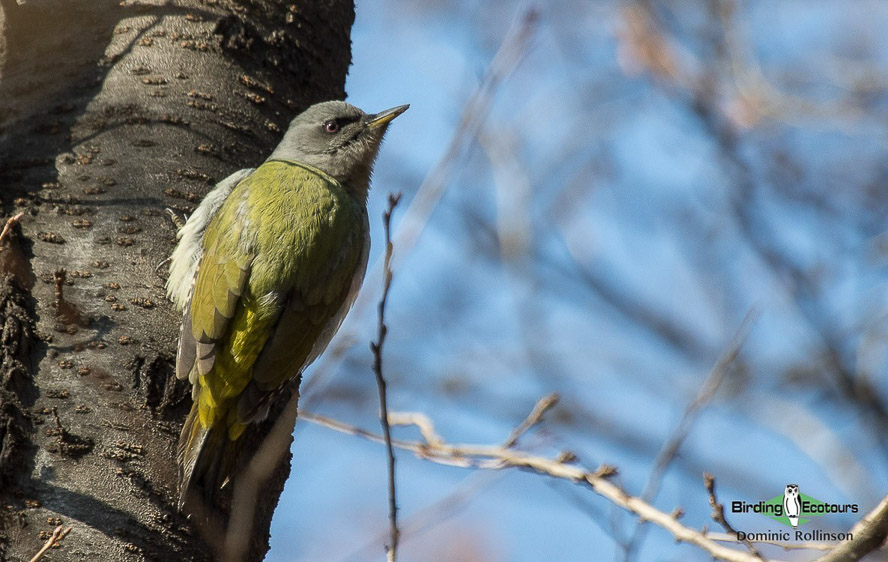
Day 4. Lake Kerkini and the Dalmatian Pelican
Lake Kerkini is simply magical. An early morning sitting by the shore, watching pelicans, egrets, and herons, while being serenaded by Common Nightingale and Eurasian Golden Oriole, is a real pleasure. The lake and the surrounding area have a bird list of over 300 species, and we will spend the full day (our first of two here) exploring the Lake Kerkini area.
Lake Kerkini is home to two of Europe’s most iconic species, the Near Threatened (BirdLife International) Dalmatian Pelican and the odd-looking and fairly localized (in Europe), Pygmy Cormorant, both top targets. The surrounding forest area holds a wonderful diversity of warblers, including Eastern Orphean Warbler, Sardinian Warbler, Eastern Subalpine Warbler (a total stunner), Eastern Olivaceous Warbler, and Eastern Bonelli’s Warbler, as well as Common and Lesser Whitethroats. Common Nightingale and Common Cuckoo are never too far away either, their distinctive songs giving away their presence.
Overnight: Guesthouse Limnaio, Kerkini
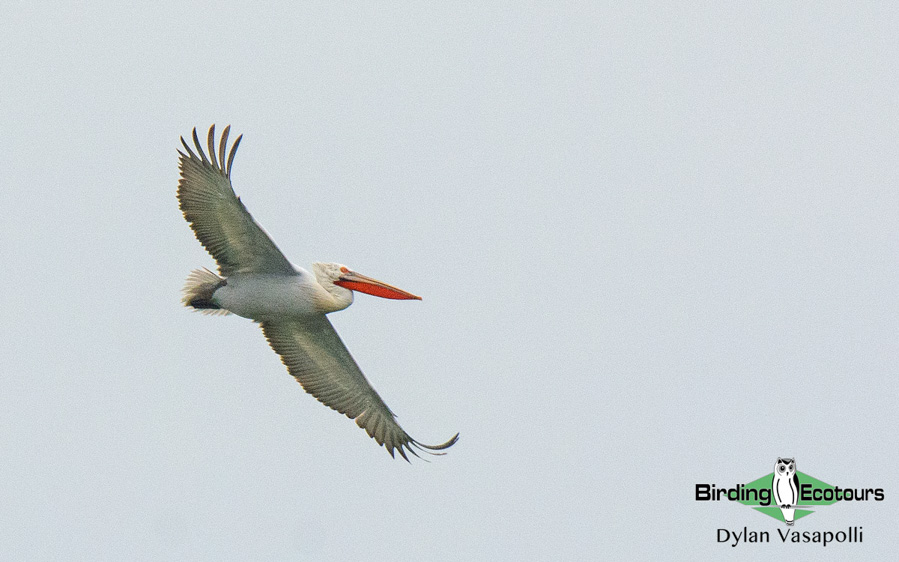
Day 5. Lake Kerkini boat cruise and woodpeckers
After an early breakfast we will wrap up our lakeshore birding, before departing for a morning boat cruise on Lake Kerkini, where we will witness an incredible diversity of waterbirds. We will visit the special raft where the Dalmatian Pelicans breed, which allows for wonderful close-up views. The Birding Ecotours tour leader will guide you through the best ways to photograph these stunning birds with the still water of the lake giving the opportunity for sensational photos.
The extensive number of waterbird species here includes Great White Pelican, Pygmy Cormorant, Great Crested Grebe, Great Cormorant, White Stork, Black-crowned Night Heron, Little Bittern, Purple Heron, Great (White) Egret, Squacco Heron, Greater Flamingo, Black Stork, Glossy Ibis, and Eurasian Spoonbill.
After a picnic lunch we will spend the afternoon birding in the forests on the Bulgarian border, where we have the opportunity to see seven different (and all stunning) woodpecker species, these being Great Spotted Woodpecker, Middle Spotted Woodpecker, Lesser Spotted Woodpecker, Grey-headed Woodpecker, European Green Woodpecker, Syrian Woodpecker, and the huge Black Woodpecker. Other interesting birds to be found here include Western Rock Nuthatch, Sombre Tit, Eurasian Penduline Tit, and Short-toed Treecreeper.
Overnight: Guesthouse Limnaio, Kerkini
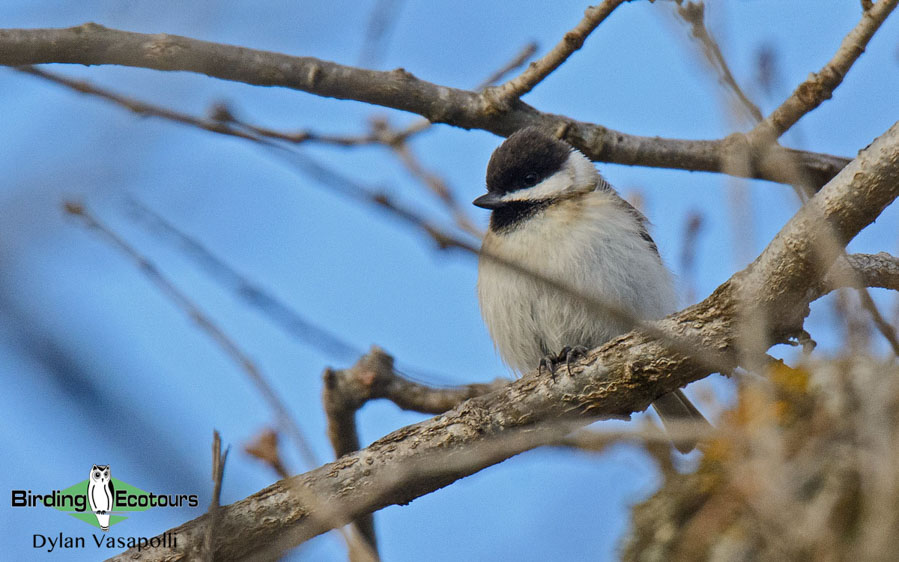
Day 6. Alpine birding on Mount Pangaion and at Kavala
After breakfast we will depart the Lake Kerkini area for Mount Pangaion. We will bird our way up the mountain, but the main focus will be on the higher slopes (weather/snow permitting), looking for, among others, Alpine Chough, Ortolan Bunting, Yellowhammer, Water Pipit, Rock Partridge, Rock Bunting, Black Redstart, Tawny Pipit, Alpine Swift, Coal Tit, and the striking Common Rock Thrush, males of this species glow!
From here we will depart for the town of Kavala, amphitheatrically built on the slopes of Mount Symvolo, one of the most picturesque cities in Greece, with a rich cultural heritage. After arriving in the late afternoon, we will wander on the cobbled streets, admire the medieval castle, and enjoy dinner in a fish taverna along the shore. The perfect end to what will have been another amazing day in wonderful Greece.
Overnight: Egnatia City Hotel & Spa, Kavala
Day 7. Nestos Delta to Evros Delta
After a relaxing breakfast we will start two days of birding in the brilliant delta habitats in northeastern Greece. First, we will visit the Nestos Delta with its series of lagoons supporting a huge number of migrant and resident species every year.
There are too many potential species at the site for us to list here but some of the highlights we will look for include Mediterranean Gull, Slender-billed Gull, European Shag, Little Tern, Greater Flamingo, Great Spotted Cuckoo, Eurasian Hoopoe, European Roller, Syrian Woodpecker, Eastern Olivaceous Warbler, Eastern Orphean Warbler, Black-headed Bunting, Eurasian Golden Oriole, Eurasian Penduline Tit, Spur-winged Lapwing, Squacco Heron, Long-eared Owl, and Little Bittern.
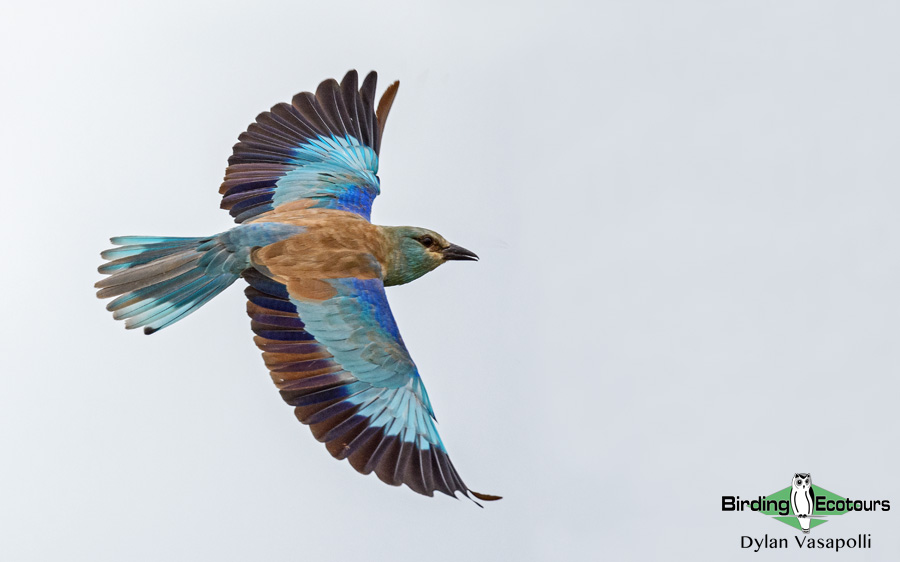
The delta is also an excellent area for birds of prey, drawn here by the volume of prey on offer. Key species possible include Western Marsh Harrier, Montagu’s Harrier, White-tailed Eagle, Levant Sparrowhawk, and Lesser Kestrel. This area is also good for shrikes, and we should see Woodchat Shrike, Lesser Grey Shrike, and Red-backed Shrike without difficulty. While in the delta we will keep our eyes peeled for Golden Jackal, an interesting canid species that ranges widely from southeast Asia to southeast Europe.
After wrapping up the morning’s birding and enjoying a picnic lunch we will make our way to our next stop, the Evros Delta. The huge Evros Delta offers us the chance to see real European rarities, due to its eastern location on the border with Turkey. We will have the full day here tomorrow too.
Once at the Evros Delta, we will get straight into birding this large site by combining some time on a boat as well as birding by foot. The Delta’s varied habitats results in a vast bird list and this should lead to some unforgettable experiences during our time here. Impressive species we will be looking out for here include Ferruginous Duck, Ruddy Shelduck, Spur-winged Lapwing, Marsh Sandpiper, Black Stork, Whiskered Tern, Lesser Spotted Eagle, Pallid Harrier, Red-footed Falcon, Eurasian Penduline Tit, Bearded Reedling (Bearded Tit), Eastern Black-eared Wheatear, Great Reed Warbler, Red-breasted Flycatcher, and Collared Flycatcher.
Our local team will organize a video presentation, a tour, and a boat trip on the delta for us, which will be a great introduction to the area.
Overnight: Hotel Isidora, Loutra Trianoupolis
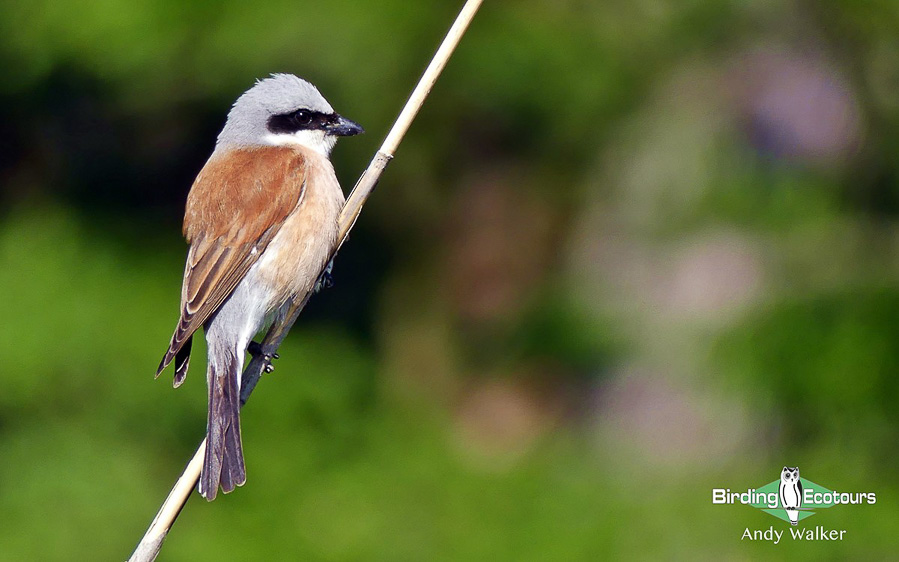
Day 8. Evros Delta
Today we have a full day birding in the Evros Delta, exploring the mixture of habitats present in the area. The Evros Delta is arguably Greece’s premier birding site. The River Evros is the Balkan Peninsula’s second largest river and this, combined with the multitude of habitats, makes it a hugely attractive area for migrant birds. In the region of 320 bird species have been recorded here and the delta is also home to several interesting and rare mammals such as (European) Wild Cat, (European) Grey Wolf, and (Central European) Wild Boar. It will be a thrill to see any of these.
On top of some of the species we could have seen in the area on the previous day we should also encounter several others, such as Eurasian Oystercatcher, Pied Avocet, Eurasian Stone-curlew, Grey Plover, Curlew Sandpiper, Black-tailed Godwit, Eurasian Bittern, Purple Heron, Greater Flamingo, Long-legged Buzzard, European Roller, Little Tern, Sandwich Tern, Black Tern, White-winged Tern, Whiskered Tern, and Isabelline Wheatear. It is sure to be a very “birdy” day!
Overnight: Hotel Isidora, Loutra Trianoupolis
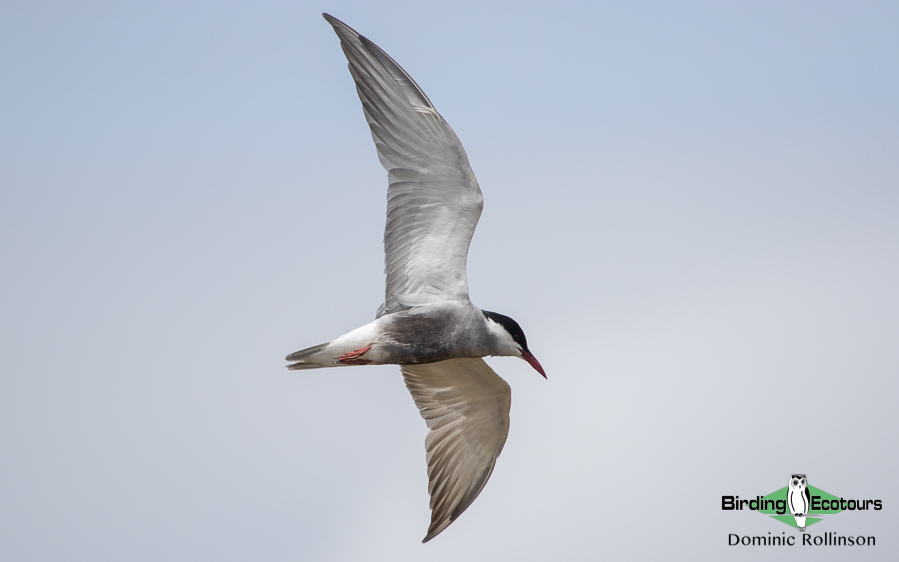
Day 9. Dadia Forest
We will leave early in the morning and drive to the nearby Dadia Forest, where we will spend a full day birding. This mountainous area is one of the best places in Europe for the observation of birds of prey. An outstanding 35 out of 38 diurnal raptors occurring in Europe have been recorded here, along with seven out of nine owl species. To find as many of them as possible will be our focus across the day. Species regularly recorded here include Cinereous Vulture, Griffon Vulture, Egyptian Vulture, Short-toed Snake Eagle, Golden Eagle, Booted Eagle, Common Kestrel, Eurasian Hobby, Common Buzzard, Lesser Spotted Eagle, Eurasian Sparrowhawk, Black Kite, Eurasian Goshawk, Long-legged Buzzard, Pallid Harrier, Western Marsh Harrier, Peregrine Falcon, and European Honey Buzzard.
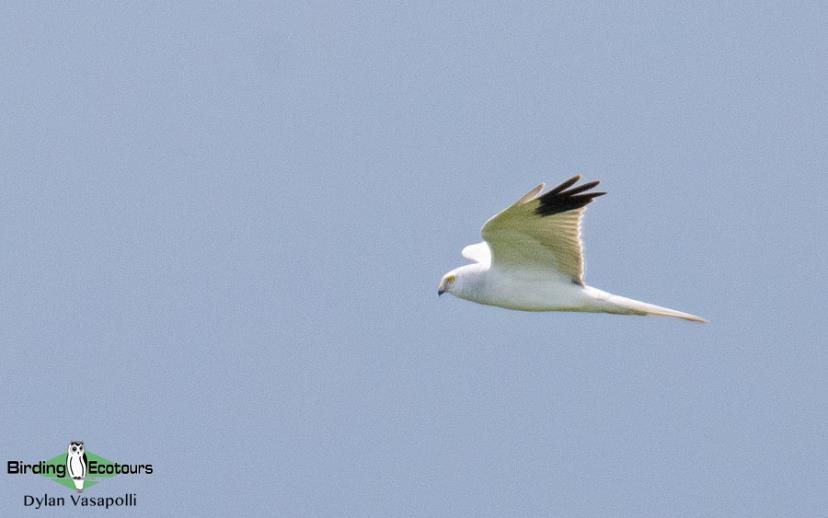
The Dadia Forest is however not just about the birds of prey and the area is home to a huge range of other species which adds to its reputation as one of Europe’s top birding locations. Other key species here include Black Stork, White Stork, European Turtle Dove, Common Cuckoo, Eurasian Hoopoe, European Bee-eater, European Roller, Syrian Woodpecker, Middle Spotted Woodpecker, and Chukar Partridge.
The forest is also superb for passerines including Ortolan Bunting, Crested Lark, Eastern Olivaceous Warbler, Olive-tree Warbler, Eastern Bonelli’s Warbler, Barred Warbler (the males are particularly strikingly plumaged with their bright white eye), Eastern Orphean Warbler, Eastern Subalpine Warbler, Great Reed Warbler, Blue Rock Thrush, Eastern Black-eared Wheatear, Black-headed Bunting, Sombre Tit, and Masked Shrike. The early morning bird song here at this time of year will be enveloping and we are sure to have an exciting time birding the area.
While in Dadia Forest area we will also have the amazing experience of visiting a vulture feeding station where we can watch the spectacle of these amazing birds as they come to feed. This should give us some great views of Griffon Vulture, with other species such as Egyptian Vulture and Cinereous Vulture possible too. If we are lucky, we may even observe Eastern Imperial Eagle, and Golden Eagle here, two spectacular apex predators.
The woodland here is also home to plenty of other widespread and common European species such as Eurasian Woodcock, Song Thrush, Mistle Thrush, Common Blackbird, European Robin, Eurasian Jay, Eurasian Wren, Common Firecrest, Goldcrest, Eurasian Blue Tit, Great Tit, Black Redstart, Hawfinch, Common Chaffinch, European Goldfinch, European Greenfinch, Eurasian Siskin, and Common Linnet. In the late afternoon we will have a short drive back to our hotel.
Overnight: Hotel Isidora, Loutra Trianoupolis
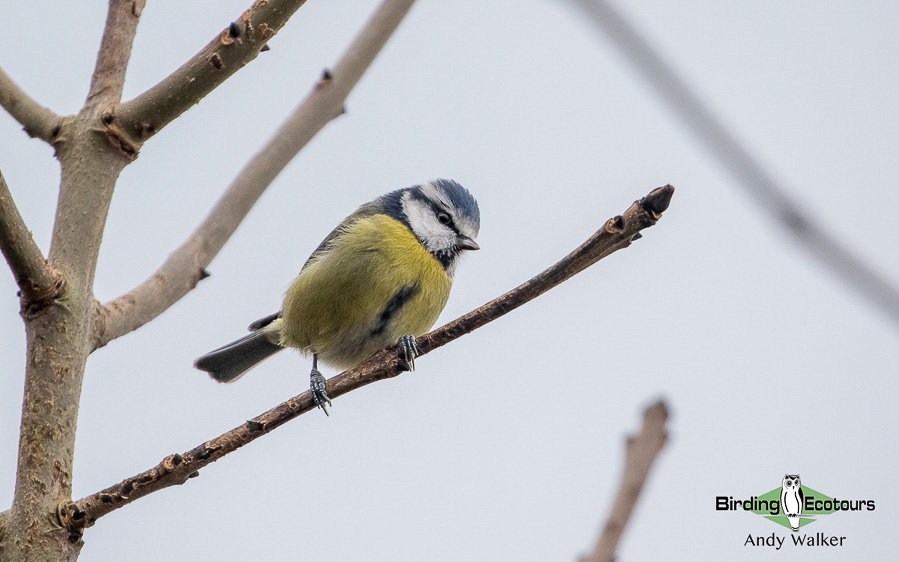
Day 10. Drive to Thessaloniki and departure
Today we will depart for Thessaloniki, with stops at wetlands along the way as well as a picnic lunch en route. After lunch we will make our way to the Thessaloniki International Airport where we should arrive around mid-afternoon for our outbound flights, either home (please liaise with us before booking your late afternoon/evening flight), or your continued travel in Greece (which we would highly recommend).
If you would like to extend your time in Greece, we would love to host you on our Birding Tour Greece: Lesvos in Spring Extension, this short trip will pick up the island specials such as Cinereous Bunting, and Krüper’s Nuthatch, as well as a myriad of spectacular and sought-after migrants.
Prior to leaving, the local guide and Birding Ecotours tour leader will be on hand to answer any questions relating to the trip list or identification of species we have seen on the tour.
Overnight: Not included (we can book you an extra night in Thessaloniki or Athens if required)
Please note that the itinerary cannot be guaranteed as it is only a rough guide and can be changed (usually slightly) due to factors such as availability of accommodation, updated information on the state of accommodation, roads, or birding sites, the discretion of the guides and other factors. In addition, we sometimes must use a different international guide from the one advertised due to tour scheduling.
Download ItineraryDuring our tour, your guide will be driving you in a comfortable vehicle. The tour does not require a great deal of walking or steep hiking to see the bulk of the birds, however a basic level of fitness is required including the ability to walk on rough terrain.
